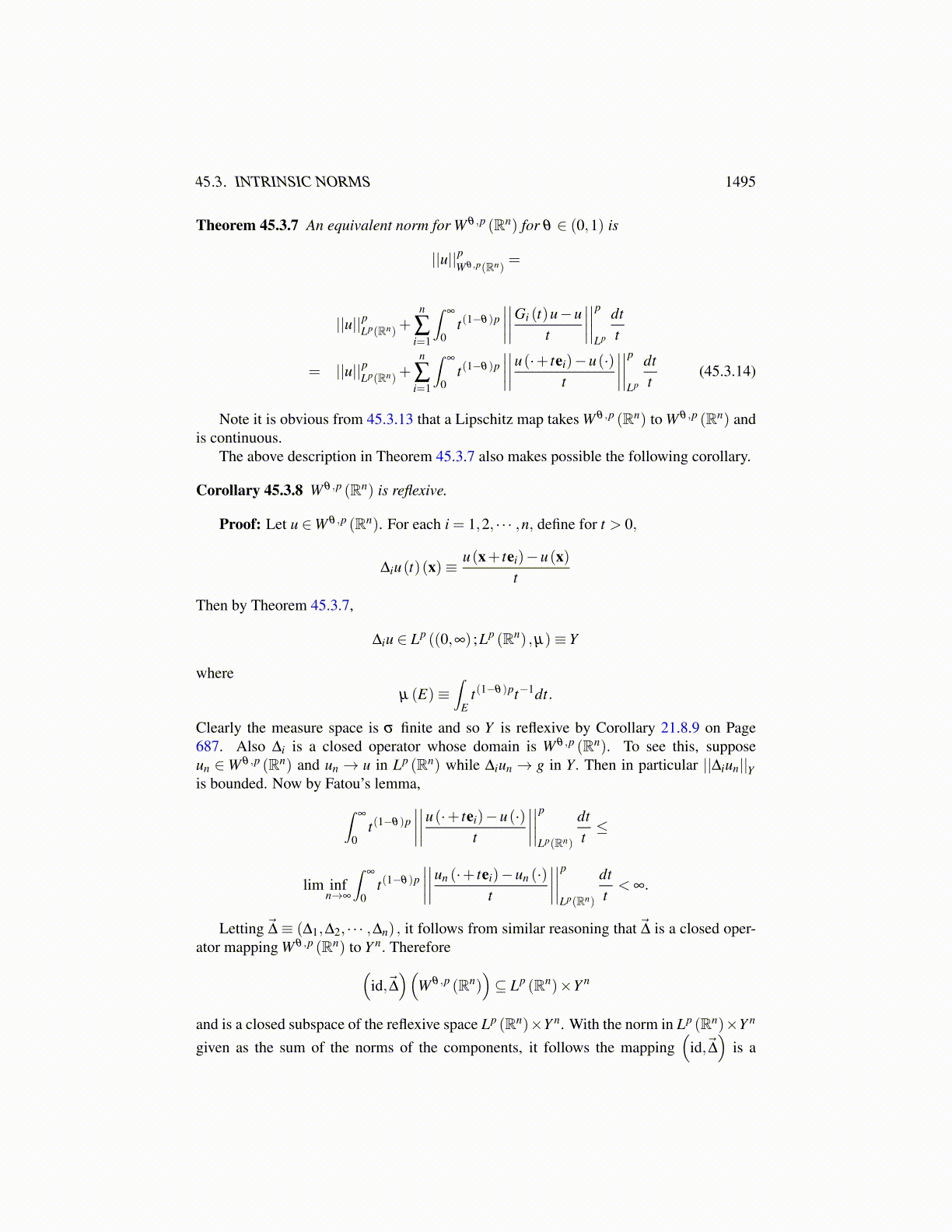
45.3. INTRINSIC NORMS 1495
Now ∫∞
0X[0,1] (t) t pθ ||u||pA1
dt/t ≤C (p,θ) ||u||pT0
and using Lemma 45.3.2,∫∞
0X[0,1] (t)
∣∣∣∣ 1t2
∫ t
0||G(τ)u−u||dτ
∣∣∣∣p t pθ dtt
≤∫
∞
0
∣∣∣∣1t∫ t
0||G(τ)u−u||dτ
∣∣∣∣p t p(θ−1) dtt
≤ 1(1− (θ −1))p
∫∞
0||G(τ)u−u||p t p(θ−1) dt
t
=1
(2−θ)p
∫∞
0
∣∣∣∣∣∣∣∣G(τ)u−ut
∣∣∣∣∣∣∣∣p t pθ dtt≤C (θ , p) ||u||pT0
This proves the theorem.Of course the case of most interest here is where A1 = Lp (Rn) and
G(t)u(x)≡ u(x+ tei)
Thus Λu = ∂u/∂xi, the weak derivative. The trace space T (D(Λ) ,Lp (Rn) , p,1−θ) thenis a space of functions in Lp (Rn) which have a fractional order partial derivative withrespect to xi.
Recall from Definition 45.1.1 that for θ ∈ (0,1) ,
W θ ,p (Rn)≡ T(W 1,p (Rn) ,Lp (Rn) , p,1−θ
)Let f ∈W
(W 1,p (Rn) ,Lp (Rn) , p,1−θ
). Then
|| f ||W ≡max(∫
∞
0t(1−θ)p || f (t)||pW 1,p
dtt,∫
∞
0t(1−θ)p ∣∣∣∣ f ′ (t)∣∣∣∣pLp
dtt
)Letting Gi (t)u(x)≡ u(x+ tei) and Λi its generator,
W 1,p (Ω) = ∩ni=1DΛi∩Lp (Rn)
with the norm given by
||u||p = ||u||pLp +n
∑i=1||Λiu||pLp
which is equivalent to the norm
||u||p =n
∑i=1||u||pD(Λi)
.
Then by considering each of the Gi and repeating the above argument in Theorem 45.3.6,it follows an equivalent intrinsic norm is
||u||pW θ ,p(Rn)
= ||u||pLp(Rn)+
n
∑i=1
∫∞
0t(1−θ)p
∣∣∣∣∣∣∣∣Gi (t)u−ut
∣∣∣∣∣∣∣∣pLp
dtt